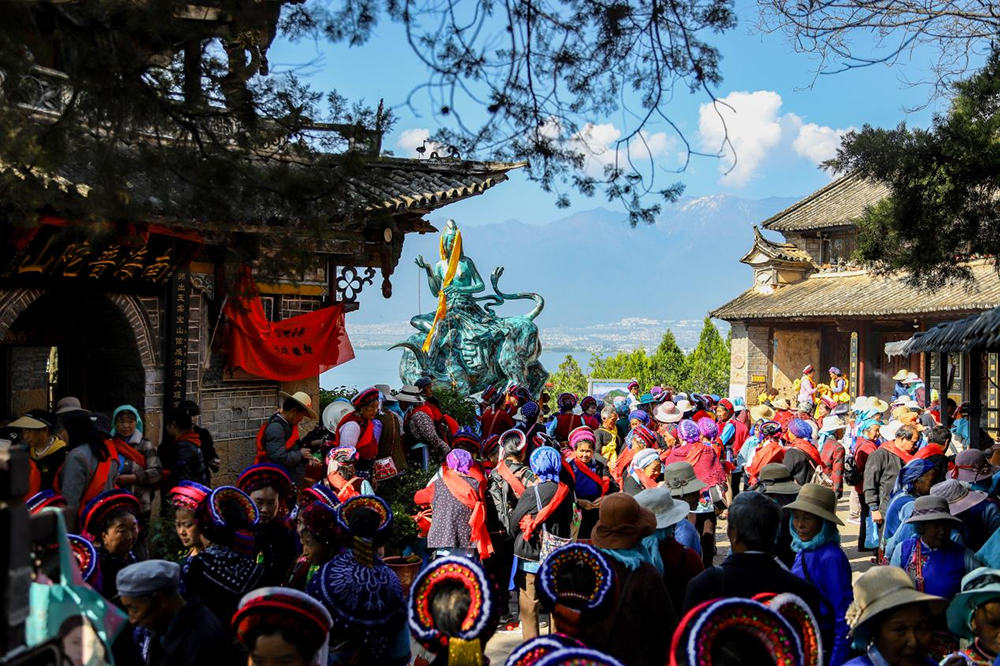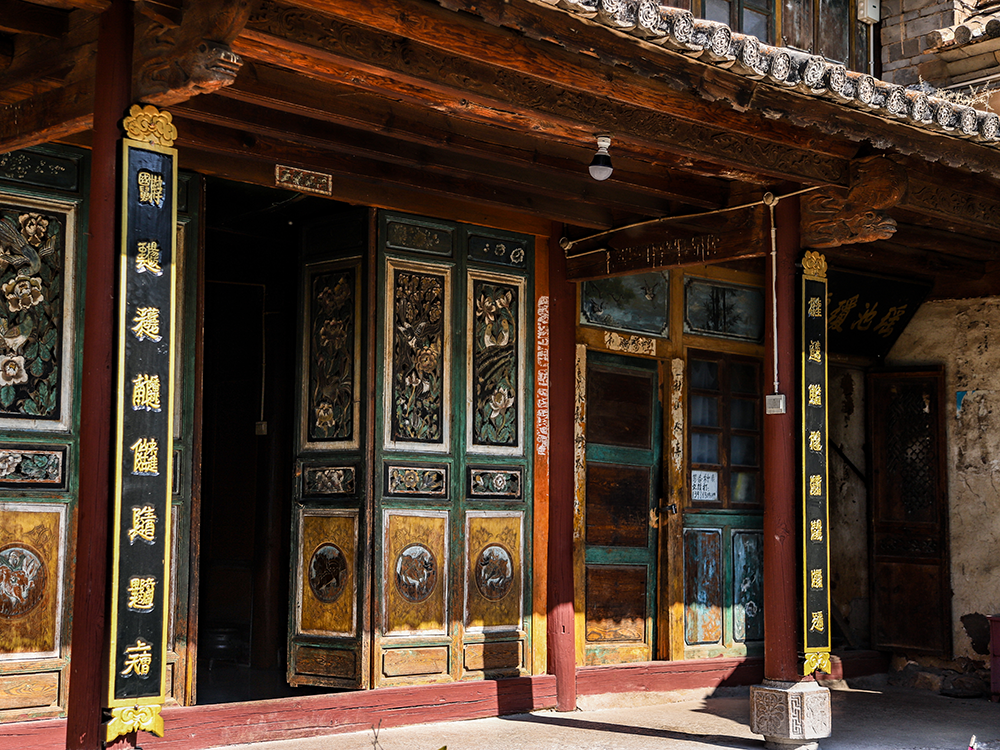Baxian Building
The Bai people are exceptionally adept at absorbing foreign cultures. Their religious beliefs often reflect the characteristics of mutual absorption and tolerance among multiple religions, with a widespread fusion of Buddhism, Taoism, and Confucianism. This is also reflected in the Guanyin Pavilion.
Keyword:
Dali Luoquan
Luoquan Peninsula
Luoquan Pagoda
Tianjing Pavilion
Category:
Spot Description
The Bai people are a nationality exceptionally adept at absorbing foreign cultures. Their religious beliefs often reflect the characteristics of mutual absorption and tolerance among multiple religions, with a widespread blending of Buddhism, Taoism, and Confucianism. This is also reflected in the Guanyin Pavilion.
In 1986, local villagers pooled their merit to build a "Pavilion of the Eight Immortals" about 20 meters northwest of the newly built Guanyin Pavilion. The upper floor houses statues of the Queen Mother of the West and the Eight Immortals. The lower floor, however, houses a statue of the Maitreya Buddha.
According to local legends, there were four "Eight Immortals Platforms" within the Haidongba area. The East Platform was located on the Tiger Head (also known as Zuyingshan) at the border of Mingzhuang and Wenwu; the South Platform was on the hilltop of Hequ Village; the North Platform was on the top of Heshan; and the West Platform was to the west of the original Xiangyang Street. There are no remaining traces of these platforms today, only occasional visits from those who offer incense and prayers.
Legend says there are Upper Eight Immortals and Lower Eight Immortals. The Upper Eight Immortals are the true Eight Immortals, referring to the well-known eight: Iron Crutch Li (Li Ningyang, Li Tieguai), Han Zhongli (Zhongli Quan), Lü Dongbin (Lü Chunyang), Han Xiangzi, Cao Guojiao, Lan Caihe, He Xiangu, and Zhang Guolao. The Lower Eight Immortals are called False Eight Immortals, Earthly Eight Immortals, or Local Eight Immortals; they don't have specific names and generally refer to local deities like the Dragon Old Lady. It is said that the true Eight Immortals each possess great supernatural powers, as the saying goes, "Eight Immortals crossing the sea, each showing their magical powers"; but the Earthly Eight Immortals have limited powers, being those who haven't yet ascended to the immortal realm and are considered down-on-their-luck individuals. Legend has it that once, the true and false Eight Immortals coincidentally worshipped Guanyin Bodhisattva, each claiming to be the true Eight Immortals. Guanyin, after observing them, found it difficult to distinguish between them. After some thought, Guanyin rode on auspicious clouds, crossed the sea, and said to them, "Please cross the sea to worship me!" As a result, the true Eight Immortals each displayed their supernatural powers and crossed the sea, while the false Eight Immortals, lacking such powers, could only sigh at the sea. Guanyin designated those who crossed the sea as the Upper Eight Immortals, naturally ascending to the immortal realm, and those who didn't cross as the Lower Eight Immortals, allowing them to enjoy some earthly pleasures. Thus, both the Upper and Lower Eight Immortals rejoiced and thanked Guanyin. It is said that this is the origin of the "Eight Immortals Platforms" and incense offerings to figures like the "Dragon Old Lady" in various places.
A large painting depicting "The Eight Immortals Crossing the Sea: A Complete Explanation" is painted on the left wall outside the land entrance to the scenic area. Its content depicts the story of the true and false Eight Immortals worshipping Guanyin, crossing the sea based on their true abilities, and being judged by Guanyin as Upper and Lower Eight Immortals. The explanatory text on the painting reads:
True and false Eight Immortals, worshipping Guanyin together, both claiming to be the Eight Immortals, difficult to distinguish. Guanyin, with divine calculation, ordered them to cross the sea. The Eight Immortals crossed the sea, each showing their magical powers. The Eight Ghosts crossed the sea, none succeeded. Guanyin, compassionate, judged them as upper and lower. The superior Eight Immortals, the inferior Eight Immortals, welcoming immortals and sending away ghosts, all rejoiced.
The original Eight Immortals Pavilion displayed two ancient couplets:
According to some research, the pronunciation of several obscure characters is: xuān zhào liǎo lǎng. The meaning of the couplet is: Daoism pervades the world, the universe is bright, and the world is peaceful.
This is a special couplet composed of several characters forming a single "character." Formally, it consists of eight characters per line, but the entire couplet is a poem about the Eight Immortals, with four lines in the upper couplet and four lines in the lower couplet, totaling eight lines:
Iron Crutch Li, his Daoist methods are high, Zhongli Laozu waves his fan, Dongbin carries his sword, surrounded by a clear breeze, Xiangzi plays his jade flute in the clouds;
Guojiao holds a cloud-raising board, Caihe offers a peach from the Pantao Garden, Xiangu presents longevity wine, Guolao rides his donkey to heaven.
Some research suggests that the couplet was written by Yang Zhiyi, a Qing Dynasty scholar, but this is uncertain. Whether there are other ways to read the couplet is unknown, such as the exact pronunciation of the single "character" formed by several characters.
Recommended Attractions
Wind, Flower, Snow, Moon Pavilion
The First Pavilion of Erhai Lake - Tianjing Pavilion








